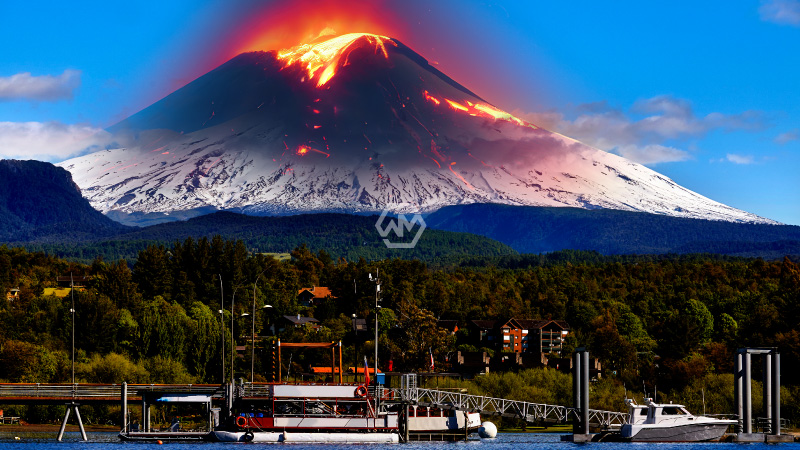Chile’s snow-covered Villarrica well of lava has been shaken by seismic tremors and is burping fire, putting experts on alert for a potential emission in a beautiful region darling by vacationers.
Since October, the 2,847-meter (9,300-foot)- high Villarrica has been the site of gas blasts and seismic occasions, with mainstays of fire up to 220 meters high shooting out of its magma lake.
Villarrica Volcano Eruption
The icy mass-clad well of lava sits above the city of Pucon, with a populace of around 28,000 individuals who live only 15 kilometers (10 miles) from the pinnacle.
The district’s lakes and lavish timberlands are a well-known vacationer draw and exactly 10,000 guests climb Villarrica each late spring, as per official figures.
“The thing about Villarrica is the gamble, because many individuals are living in regions that are profoundly uncovered” to expected harm from the fountain of liquid magma, said geophysicist Cristian Farias.
He cautioned that occupants had failed to remember the perils of “what Villarrica can do.” Amigo said the well of lava was risky because its emissions frequently cause dangerous volcanic stone and mud streams “and because it has a huge populace and framework around it.”
- There is another Volcano eruption threat occurred.
- After Mana Loa volcanic eruption Villarrica volcano was under the alert of eruption.
- Chile’s snow-covered Villarrica volcano has split lava after the earthquake.
Specialists contrast the ongoing degree of movement with that seen before the past emission in 2015 when a blast of magma, gas, and debris shot up 1.5 kilometers up high, causing no harm before the spring of gushing lava calmed down once more. Villarrica’s last significant emission was in 1984.
The Public Geography and Mining Administration gave a yellow caution in November in four towns near the pinnacle, meaning nobody can come extremely close to the pit. The body has likewise set up crisis departure plans and continuously observed volcanic movement.
A yellow alarm is a step before an orange caution, which demonstrates coming emissions. Mining Clergyman Marcela Hernando said the thought was to console residents that innovation and specialists are continually watching out for Chile’s 45 “most significant volcanoes.”



